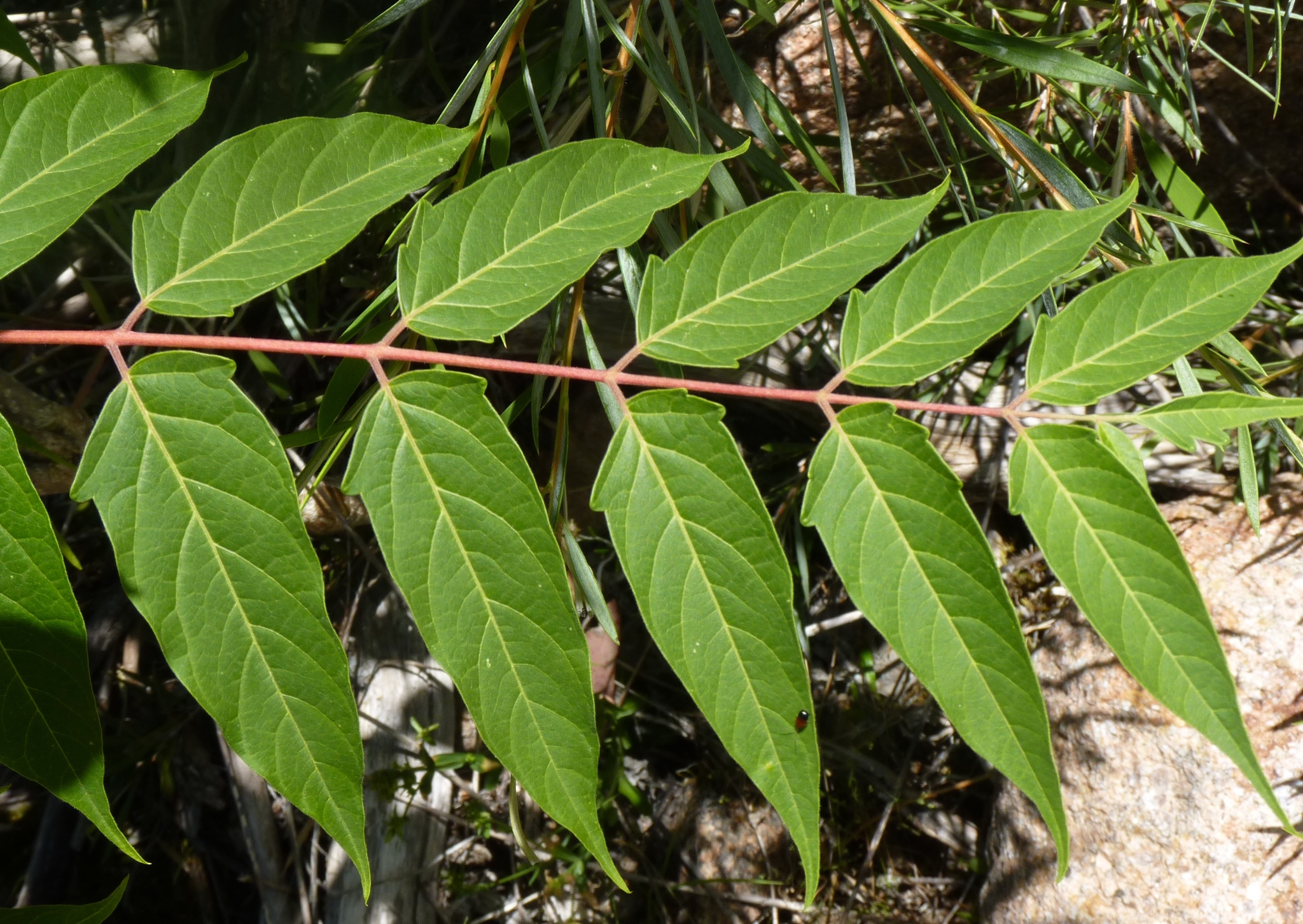
A fast growing, sometimes double-trunked, deciduous tree to 25 m or so tall. Bark smooth and longitudinally striped with white grooves. Young shoots velvety-hairy. Leaves compound, alternate, 50-80 cm long, bunched at the ends of the branches. Leaflets 20-35, shortly stalked, opposite, ovate-lanceolate, mostly 7-12 cm long, usually with several large teeth on either side near the base, each with a gland beneath, one small lobe at the base generally prominent. Leaf stalks swollen and red at the base. Flowers greenish, in clusters 10-20 cm long. Fruits in clusters, winged, 3-4 cm long with the seed in the centre (samaras), green, becoming red to give an attractive colouration in Feb.
China
The flowers of male plants and sometimes the leaves are unpleasant-smelling. An attractive, versatile tree that grows under a wide range of conditions but has an unfortunate tendency to sucker prolifically and spread out of control; it has naturalised in SA, Qld, NSW and Vic where the suckering habit leads to the formation of dense thickets.
Compound leaves which usually have leaflets with a small lobe at the base and which are often unpleasant-smelling when crushed; flowers unpleasantsmelling; fruit a samara.
SPECIMENS VIC: Hamilton (Bot. Gds); Melbourne (Royal Bot. Gds). TAS: Hobart (Royal Tasmanian Botanical Gds); Plenty (Salmon Ponds).
Source: (2002). Simaroubaceae. In: . Horticultural Flora of South-eastern Australia. Volume 3. Flowering plants. Dicotyledons. Part 2. The identification of garden and cultivated plants. University of New South Wales Press.
